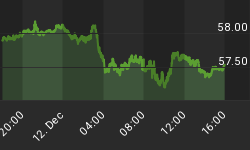An Occasional Letter From The Collection Agency
It is time for a short update to the series of artices that started with The Future Actions of The Federal Reserve And US Govt Are Known
Many people have been wondering what the cost of all this intervention may be. I firmly believe that Bernanke, Paulson and the US Government are following the ideas laid out in Eggertsson's work "An interpretation of The Deflation Bias and Committing to Being Irresponsible".
The following is from the work that Eggertsson did and I interpreted. It shows that the plan to buy assets was long in place before the current problems. One of those credited in the paperby Eggertsson is Ben Bernanke:

What Eggertsson means is if tax cuts are so large as to cut govt spending by 10% (tax breaks forever?) then to keep an inflationary bias as a credible outcome (keep inflation expectations in the mind of Institutions, Business and Joe Public) would require the use of a sum equivalent to 70% of US GDP to buy "real assets".
Or, as I said in April:
-
"If Bernanke and Co keep with the blueprint (it would be difficult to see how they could deviate now without destroying carefully implanted expectations) we can expect to see continuous and expanding intervention in what was previously thought to be off limit areas.
Treasury bond issuance should rise and does not have to have a defining limit. Tax rebates will continue and grow, expanding beyond traditional areas. Use of current GSEs to expand government debt will be encouraged and may well lead to the formation of "Super GSE's" that could take on second lien loans on property, for example.
The Fed will expand its facilities, including more market participants and widening the range of assets that can be used, including stocks. The facilities will become permanent but will be allowed to run down in use as circumstances dictate. It will be imperative to remove any stigma associated with the use of such facilities, possibly by converting the facilities to a type of GSE, or more likely, a Fed Sponsored Enterprise.
Concerted and possibly international intervention in Forex markets should be given a high level of probability. This will allow a slow and orderly re-pricing lower of the dollar and a continued bias toward inflation."
In that light remarks such as these now make sense:
-
Sept. 23 (Bloomberg) -- Federal Reserve Chairman Ben S. Bernanke signaled that the government should buy devalued assets at above-market values to make its proposed $700 billion rescue package most effective in combating the financial crisis.
"Accounting rules require banks to value many assets at something close to a very low fire-sale price rather than the hold-to-maturity price," Bernanke said in testimony to the Senate Banking Committee today. "If the Treasury bids for and then buys assets at a price close to the hold-to-maturity price, there will be substantial benefits."
and this:
- Sept. 23 (Bloomberg) -- Federal Reserve Chairman Ben S. Bernanke said the U.S. economy will shrink if markets don't begin functioning normally, joining Treasury Secretary Henry Paulson in urging skeptical lawmakers to quickly pass a $700 billion rescue for financial institutions.
"I believe if the credit markets are not functioning, that jobs will be lost, the unemployment rate will rise, more houses will be foreclosed upon, GDP will contract, that the economy will just not be able to recover," Bernanke told the Senate Banking Committee today. "My interest is solely for the strength and recovery of the U.S. economy."
The last line is a white lie. His sole interest is to avoid deflation, at all costs.
So, what are the possible ranges of increase in deficit spending/asset buying that may be required?

Read it and weep oh humble taxpayer, the benefit goes once again to the Bankers and the corrupt financial system. You have just had your money used to "buy high".
















